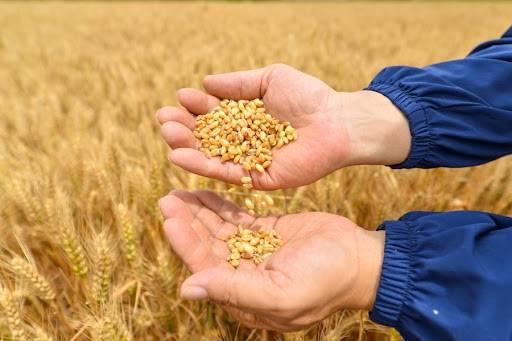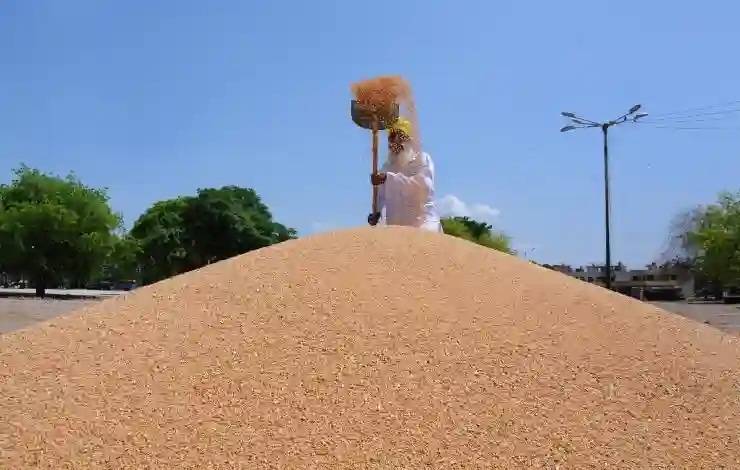The development comes as the global supply of wheat is getting constrained due to the Russian-Ukrainian war…reports Asian Lite News
Egypt has approved India as a wheat supplier, said Union Minister Piyush Goyal on Friday.
“Indian farmers are feeding the world,” tweeted the Minister of Commerce and Industry, Consumer Affairs, Food and Public Distribution and Textiles.
“Egypt approves India as a wheat supplier. Modi Govt. steps in as world looks for reliable alternate sources for steady food supply.”
“Our farmers have ensured our granaries overflow & we are ready to serve the world.”
The development comes as the global supply of wheat is getting constrained due to the Russian-Ukrainian war.
Both the nations are major global producers of wheat.
On the other hand, Egypt is a major wheat importer in the world.
Recently, India has diversified its wheat exports market.
Less MSP procurement
The Ukraine-Russia war-led speculation surge for Indian export of wheat may bring down government procurement under Minimum Support Price (MSP) to 30-35 million metric tonnes (MMT) against the targeted 44 MMT this year and high vegetable oil prices may shift some unirrigated rice area to oilseeds, a US Agriculture Department report said.
The US Department of Agriculture’s ‘Grain and Feed Annual – 2022’ report for India, released late on Tuesday night (India time) dwells on market possibilities, sowing area, and record productions.
Pointing out that India is heading for a record wheat harvest this marketing year (MY), it said the Foreign Agricultural Service, New Delhi forecasts MY 2022/2023 (April-March) wheat production at a record 110 from 30.9 million hectares, and up from last year’s record 109.6 MMT from 31.1 million hectares.
“India is heading for a record wheat harvest this coming marketing year (MY) thanks to highly favorable weather conditions in the major wheat growing areas. If good weather conditions hold through the harvest (April-May), FAS New Delhi (Post) forecasts MY 2022/2023 (April-March) wheat production at a record 110 million metric tons (MMT) from 30.9 million hectares, and up from last year’s record 109.6 MMT from 31.1 million hectares,” it said.
It blamed global prices fueling domestic pricing and receding fear of new Covid-19 disruptions to claim that government procurement is set to swing into reverse in 2022/23.
“In February 2022, but just prior to Russia’s invasion of Ukraine, the Indian government set the 2022/23 procurement target at 44 million metric tons. With speculation rampant about a surge of demand for Indian export wheat, due to high global prices, sources see the government’s minimum support price (MSP) procurement dropping to 30-35 million metric tons,” it said.
India’s 2021/22 (October 2021-January 2022) total rice exports are officially estimated at 6.8 MMT, up from 5.7 MMT during the same period last year on increased coarse rice exports to Bangladesh, China, and African countries, the report said.
“Assuming no significant change in the current price parity for Indian rice, 2021/22 rice exports are expected to reach 20.5 MMT, and 2022/23 exports are forecast at 18 MMT.”
Warning that high vegetable oil prices may shift some un-irrigated rice area to oilseeds, the report said that timely, well-distributed 2022 monsoon rains are critical for forecast area planted and yields as 40 per cent of the rice area is rain-fed (un-irrigated).
Despite 2021 monsoon rains supporting a record corn harvest, 2021/22 total coarse grain production is estimated lower at 49.9 MMT due to lower production of other coarse grains, the report said. Timely planting under above normal 2022 monsoon rains and favorable weather conditions for the winter planted rabi season corn boosted yield prospects with 2021/22 corn production estimated at a record 32.5 MMT.

“However, production of millet, sorghum, and barley are estimated down from last year on lower plantings (area shifted to rice and pulses),” it said.
The report also pointed out that despite the record harvest, 2021/22 prices are on the upward trajectory.
“Prices have gone up further in the last three months in response to global prices spiking due to the Russian invasion of Ukraine. Despite India’s export competitiveness, Post forecasts 2022/23 exports lower at 2.4 MMT and imports at 100,000 MT on forecast tight domestic supplies and strong demand,” said the report that came with a disclaimer that it contained assessment of commodity and trade issues made by the USDA staff and not necessarily statements of official US government policy.

Leave a Reply